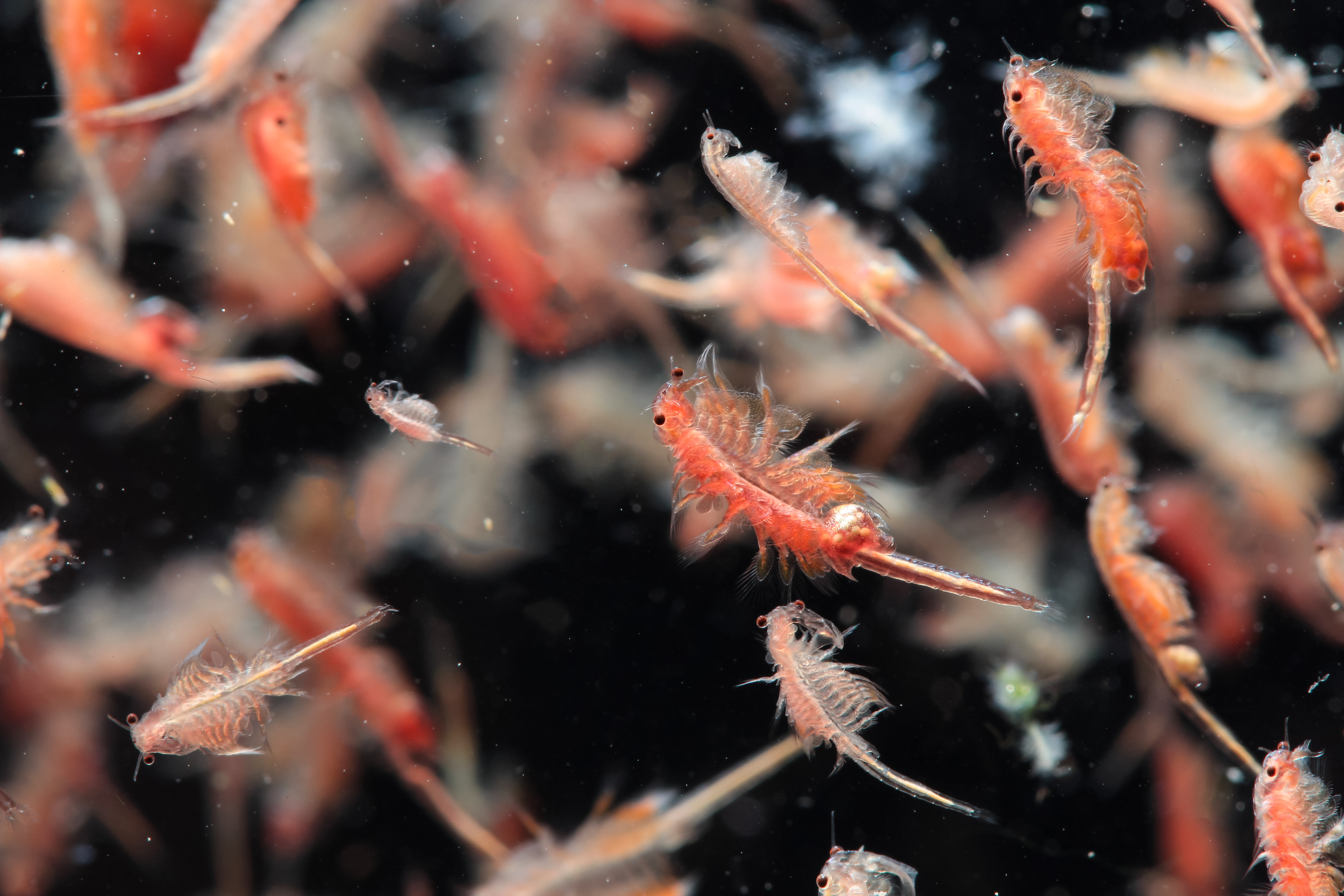
Shrimp may be some of the tiniest creatures in the water, but when it comes to the all-important tasks of mixing up the ocean layers and transporting nutrients, shrimp and krill may pack a bigger punch than we originally thought.
And you thought jumbo shrimp was an oxymoron.
New research published in Nature suggests that tiny creatures like krill and shrimp-like copepods may actually stir up ocean turbulence that’s powerful enough to extend hundreds of meters down during their daily, vertical migration. According to researchers, that could very well mean these tiny creatures play a big role in stabilizing the ocean; in delivering deeper, nutrient-dense waters to phytoplankton and other smaller marine plants near the water’s surface; and in helping with the exchange of gases in the atmosphere.
In order to make the discovery, researchers used a 1.2 meter-deep tank and a two meter-deep tank filled with brine shrimp and two layers of different density waters. With LED lights they then encouraged the shrimp to travel up and down to replicate their daily migration routines. What they found was that the animals travelled in close proximity to one another, which created an impressive turbulence.
“The original thinking is that these animals would flap their appendages and create little eddies about the same size as their bodies,” John Dabiri, an expert in fluid dynamics at Stanford University and a co-author of the paper told Science News. But what the study found was that by travelling up, the crustacean also kicked backwards, creating a downward rush that increased in strength as the group continued moving. That rush could continue for potentially up to hundreds of meters when exercised in the actual ocean.
Speaking of the actual ocean, researchers say it’s the next stop in discovering whether small marine animals really do make such a big difference in the water’s overall movement. The team plans on using shipboard measurements to track the effects of these shrimp in a real-world setting, measuring whether this biologically driven “mixing method” does exist.
“Previous studies looked for turbulence or eddies on the scale of the animals’ size [rather than downward jets,]” Dabiri added. “This paper tells us for the first time what to look for.”
“At the heart of the investigation is the question about whether life in the ocean, as it moves about the environment, does any important ‘mixing,'” William Dewar, an oceanographer at Florida State University in Tallahassee also told the publication. “These results argue quite compellingly that they do, and strongly counter the concern that most marine life is simply too small in size to matter.”
It sounds to us like good things do come in small packages, after all.
